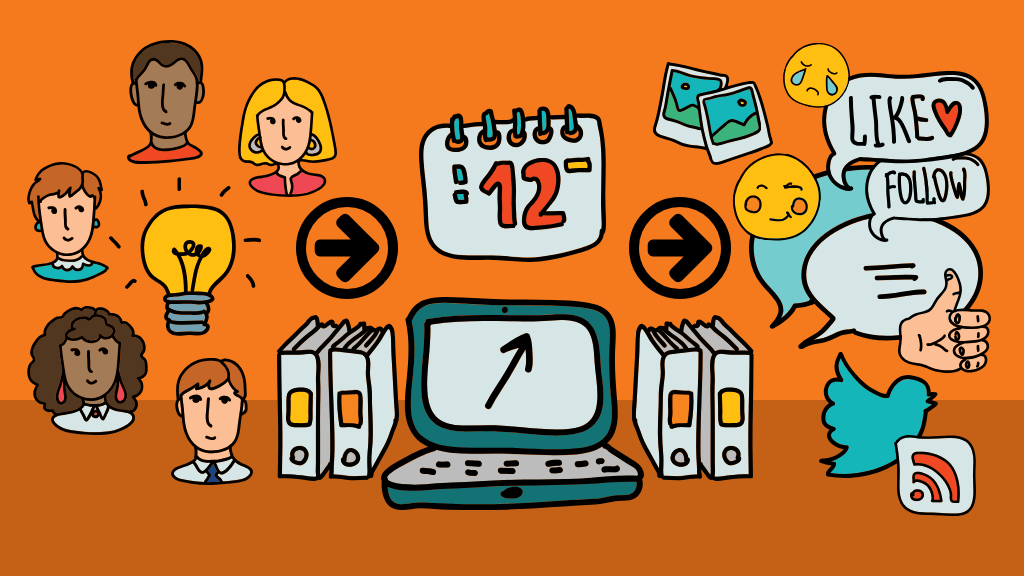
Social media has been around for years now and, despite media clickbait proclaiming its death, continues to thrive and account for most of millennials’ online time spent online.
While MySpace shut down, other platforms like Facebook, Instagram and TikTok expanded and eventually took over their niche markets.
1. Social Media as a Business Tool
Social media offers companies many useful functions that enable them to meet a range of business goals. Facebook provides high-quality video streaming and an effective messaging platform, while Instagram supports visually compelling posts and short videos, YouTube enables longer educational or entertaining content creation and Twitter is best used for real-time conversations, news alerts and alerts while LinkedIn works well as an aggregator for written material. Combined together these platforms as well as various management tools allow companies to measure performance and measure customer engagement with their products or services.
These same tools can also help businesses to quickly identify and meet customers’ needs, which allows businesses to respond effectively. Indeed, customers increasingly demand omnichannel experiences; 1/10 stated they had made complaints against a company through social media in the past year.
Social media also provides companies with valuable demographic and geographic data that they can use to tailor their marketing campaigns more efficiently, according to McKinsey’s estimates. This can lead to greater conversion rates and revenue increases.
Social media can also be leveraged as part of employee job duties to promote and share company content, helping raise brand awareness and build trust with potential customers, partners or talent/employees. Furthermore, companies operating within regulated industries such as financial services or healthcare can utilize this medium as an essential compliance monitoring tool on a regular basis.
Social media’s benefits extend far beyond teenage use; an 86-year-old may use Facebook to search for old acquaintances, for instance. Each platform offers its own distinct set of users and functionalities that may work better with certain industries or marketing objectives, like Snapchat’s real-time, ephemeral content which makes it ideal for businesses targeting younger audiences.
2. Social Media as a Marketing Tool
Social media platforms are an invaluable marketing resource, enabling businesses to engage with consumers at any point of the consumer decision journey. They enable targeted real-time ads for products and services, build brand recognition, increase customer engagement, generate positive word of mouth recommendations, generate business revenues, and drive business revenues.
These tools also come equipped with analytics dashboards that offer quantifiable insight into post reach and engagement rates, audience demographics, and more. This data informs effective marketing strategies as well as new growth opportunities.
Consumers and communities can also utilize marketing tools as a way of staying informed and engaged through these platforms, whether it’s news feeds from major outlets or hashtags on Twitter that trending and searchable; all provide windows into global current events, cultures and people that otherwise would have been impossible for us to experience directly.
Social media may face criticisms regarding “filter bubbles” and partisanship; nonetheless it has revolutionized communication by providing access to information not otherwise available anywhere. Through it anyone can take part in civic debate, raise awareness campaigns, or add their knowledge to society.
It’s clear why social media platforms have gained such widespread appeal in recent years. The most successful ones have become integral parts of modern life, with businesses, celebrities, and average users all maintaining accounts – companies including companies like the short-lived Clubhouse app from 2022 keeping an account. Even as some apps, like Clubhouse did in 2022, close down, others rise and establish themselves as the dominant players in their niches; such as Facebook, Instagram, TikTok, and Snapchat which boast sufficient audience numbers and marketing offerings that qualify them as viable social media platforms for marketers – with further features being developed over time as features evolve within each app’s features and capabilities continue to evolve over time.
3. Social Media as a Communication Tool
Social media provides a means of communication among people. Friends, family, and others use it to stay in touch and exchange ideas; people also use social media to express emotions and opinions on different subjects; these posts can take the form of text posts, video uploads, audio clips or photo posts on various social media sites.
Social media platforms that can be found today include Instagram, Facebook, Snapchat, and LinkedIn. Each has their own distinctive way of communicating with their users; Instagram is popular for sharing photos and videos to followers while Snapchat uses filter features that add personalization and personality. Finally, LinkedIn serves as more professional networking forum that facilitates business discussions as well as job hunting.
Humans have long sought new forms of communication since the dawn of time. From grunting, cave drawings, letters to phones and emails; today the world has come a long way. Now with social media we have access to real-time global news updates; instant messaging enables instant conversations across borders instantly!
Social media continues to have both negative effects on our mental and physical wellbeing; yet its popularity as a communication tool continues to increase exponentially. Businesses use it extensively as a communication channel – from monitoring customer feedback, promoting products, building a rapport with audiences, reaching target markets cost effectively through content distribution; to staying abreast of industry developments as well as disseminating information tailored to diverse groups that might otherwise remain hard-to-reach through targeted messaging.
4. Social Media as a Community Tool
Modern social media platforms play an integral part of modern culture for billions of users worldwide, serving a range of crucial social, cultural, and political purposes ranging from networking and communication through production and sharing of content to knowledge aggregation and community building. Understanding their key functions will allow leaders to fully grasp their impact on business operations.
Social engagement is critical to brand success whether its aim is to engage its target market or build customer loyalty. Listening and responding to customers needs can grow customer bases quickly, leading to increased revenues for any given company.
Brands that excel in cultivating online communities are adept at building them successfully through offering value and creating an atmosphere of belonging for their followers. This may involve offering special promotions or engaging in one-on-one communication; by creating such an environment, brands can build engagement, brand affinity, retention and conversion rates simultaneously.
Twitter, Instagram and TikTok remain dominant social media platforms; however, smaller platforms like Snapchat are carving out an important place within specific demographics and geographic markets. Snapchat provides brands with an authentic means of reaching younger demographics while offering them more personal communication that’s harder to achieve elsewhere.
Additionally, social media platforms offer access to news and information that might otherwise not be readily available through traditional channels. Apps like Reddit or Stack Overflow enable individuals to share helpful tips with one another; TripAdvisor and Yelp enable consumers to voice their opinions about restaurants, hotels or consumer products, providing valuable reviews that could potentially influence purchasing decisions or encourage others to try something new.
5. Social Media as a Media Tool
Social media platforms boasting billions of active users and an immense audience potential have become integral parts of many consumers’ daily lives, providing access to news, information, entertainment and connecting people around the globe with people they might otherwise never meet in real time.
As was seen during the COVID-19 pandemic, people flocked to social media during this crisis to connect with loved ones, share updates, seek support and find entertainment through platforms such as TikTok, Instagram Reels and YouTube – these platforms also providing outlets for creative content production and providing an avenue for entrepreneurs and artists to build audiences.
Social networking/micro-blogging platforms like Facebook and Twitter allow users to stay in touch through exchange of short status messages (140 characters or less) while providing brand pages and personal profiles for brand pages and brand pages. LinkedIn specifically serves business connections and professional growth; while consumer review websites such as Yelp or TripAdvisor allow them to provide honest reviews about restaurants, hotels or products they’ve experienced first hand.
Social media provides consumers with access to an endless stream of engaging content, from humorous videos and celebrity news clips, e-commerce sales and shopping websites, as well as news itself – according to Pew Research 55% of adults now get their news via social media!
Platforms provide businesses with a powerful tool for monitoring, responding to, amplifying and leading consumer behavior. From encouraging brand loyalty and conversions through customer service to tapping new demographics and geographic markets with targeted advertising; social media has transformed how companies engage their customers. Understanding its functions together is key for making the most out of social media for business use.


